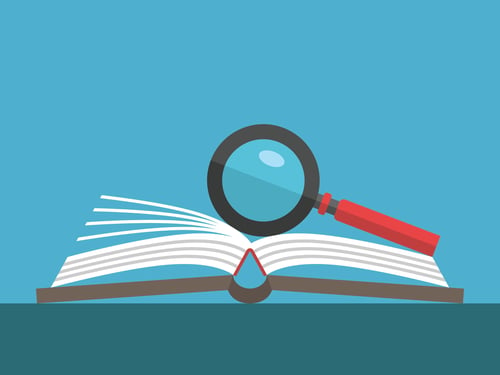4 Must-have Data Points for Dispatch-Billing Alignment and Maximum Reimbursement
Know Your EMS Billing Inside and Out for Accurate Claims
Documenting Patient Care Reports to Reflect the Provided Level of Service When discussing the levels of service for billing, it’s important to keep in mind the difference between operations and regulatory definitions
Was this information valuable?

Documenting Patient Care Reports to Reflect the Provided Level of Service
When discussing the levels of service for billing, it’s important to keep in mind the difference between operations and regulatory definitions. The Center for Medicaid and Medicare Service (CMS) provides regulatory definitions for billing the different levels of service to help field providers better document their patient care report in such a way that clearly illustrates the level of service provided to their patients.

Why Are the Levels of Service Important to Understand?
For billers, understanding defined regulatory levels of service is imperative in order to bill accurate and compliant claims. This can only be accomplished if the field providers are doing their due diligence in the documentation. The knowledge of levels of service applies to documentation of the patient care report and in the billing of the services provided.
The Importance of Ensuring Proper Documentation
Proper documentation of a patient care report includes a well-written narrative with information that only the provider can document and attest to. It also is an extension of patient care and can be subject to legal scrutiny for a variety of matters.
If the documentation doesn’t support the level of service represented, the claim will be denied or if already paid, the monies will be taken back by the payer.

All claims billed to Medicare are subject to review, and the documentation is held to scrutiny to defend the level of service billed. If the documentation doesn’t support the level of service represented, the claim will be denied. If already paid, the monies will be taken back by the payer. You can encourage better documentation and enhance billing efficiency by enstating these KPIs or by reading up on the keys to better billing management here.
Definitions of Each Key Level of Service
As a biller, below are key levels of service definitions you should know in order to ensure accurate documentation:
- Basic life support: Transportation by ground ambulance with medically necessary supplies and services as defined by the State. The ambulance must be staffed by a licensed EMT-Basic in accordance with state and local laws.
- Advanced life support: Transportation by ground ambulance with medically necessary supplies and services as defined by the State. The ambulance must be staffed by a licensed Advanced EMT/EMT-Intermediate or Paramedic in accordance with state and local laws. ALS level of service is qualified by the provision of an ALS assessment and/or an ALS intervention, again in accordance with state and local laws.
- Basic life support and ALS emergency: Detailed the same as above except that in the context of an emergency response.
- Emergency response: An immediate response to a 911 call or equivalent, not to be confused with an immediate response, which is when an ambulance is called and steps are taken to respond as quickly as possible.
- Advanced life support 2: Ground transportation by ambulance with medically necessary supplies and services as defined by the state. This includes at least three separate administrations of one or more medications by IV push/bolus or continuous infusion (excludes crystalloid fluids: Normal Saline, 5 percent Dextrose and Lactated Ringers) OR the provision of at least one of the ALS 2 procedures listed below:
- When we are looking at the three separate medication administrations, the language is specific. These have to be at the full dose for each and every administration and only by IV push or bolus in accordance with medical protocol.
- Manual defibrillation/cardioversion
- Endotracheal intubation
- Central venous line
- Cardiac pacing
- Chest decompression
- Surgical airway
- Intraosseous line
- Monitoring and maintenance of previously inserted ET tube (prior to transport)
- Specialty care transport: An interfacility transport of a critically injured or ill patient by ground ambulance that includes the provision of medically necessary supplies and services at a level beyond Paramedic listed below:
- Because the Paramedic scope is set by each state, the state also sets forth criteria for the additional training and certification of Paramedics to deliver specialty care. If the state doesn’t provide or recognize this additional training or certification, then the Paramedic and/or agency services do not qualify for specialty care transport (SCT). Check with your state for further information if you have questions.
- Critical care nurse
- Emergency nurse
- Respiratory care
- Cardiac care
- Paramedic intercept: This level of service is recognized in areas where there is no ALS service but working in contract with a BLS volunteer service, and ALS provider can attend a patient on the BLS volunteer ambulance under these criteria:
- Furnished in a rural area
- Emergency response
- Volunteer service is BLS only and meets state certification requirements
- Volunteer service is prohibited by the state from billing anyone for service
- Patient requires ALS service
- ALS entity is under contract with one or more volunteer ambulance services
- ALS entity meets the state’s requirements for providing ALS care
- ALS entity bills all recipients who receive ALS Paramedic intercept services
Find Further Tips for Ensuring Accurate Claims
If you found this article to be helpful or informative, check out our other resources for improving your EMS billing agency’s day-to-day operations. Let’s work together to make life easier for doctors, patients, and your billers!
Related Posts
Podcast: 4 Ways ePCR Software Can Relieve EMS’ Biggest Headaches
Black Book Research Ranks ZOLL Billing the #1 Insurance Discovery Solution
ZOLL Pulse Blog
Subscribe to our blog and receive quality content that makes your job as an EMS & fire, hospital, or AR professional easier.
ZOLL Pulse Blog
Subscribe to our blog and receive quality content that makes your job as an EMS, fire, hospital, or AR professional easier.




